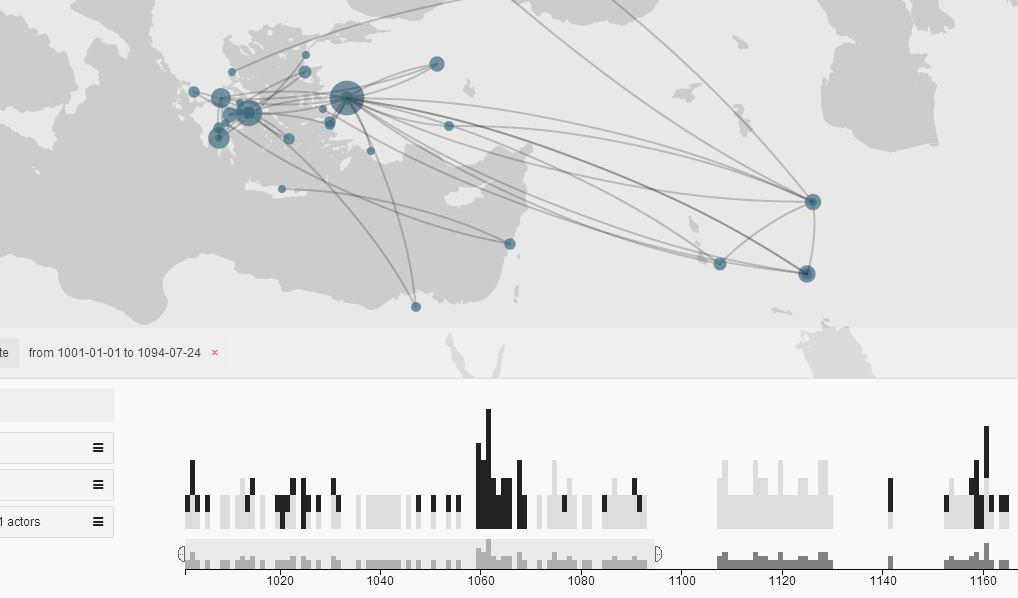This is the third and last of three posts reporting on the deployment of the Hestia toolkit to teach Herodotus’ Histories in two college classrooms at The University of Texas at Austin. The previous post described the design of an upper-division research seminar, intended for Ancient History, Classics, and Classical Archaeology majors, that integrated Hestia resources with training in historiography and network visualization. This post explores how that course design worked in practice, discussing successes and failures from the perspectives of both students and instructor. It’s a long post, but the conclusions are summarized at the end, so the impatient reader can jump to the bottom.
Most teachers are aware of the gap between the ideal version of a class created during the design process and the way that class unfolds in practice over a semester. For most of us, the practical version includes dead ends, failed experiments, course corrections, and — if we’re lucky — some unexpected successes. In some cases, elements that we initially saw as core components of the class turn out to be less important than aspects that we treated as peripheral when we designed it. In other cases, canonical core material crowds out digressions we hoped to spend time exploring. In this class — officially titled “Watching the Barbarians: Herodotus, Ethnography, and Archaeology” — both of these things happened. This isn’t at all unusual. But what makes this a particular interesting case study is the way digital technologies interacted with the arc of the course.
Read More»


















You must be logged in to post a comment.